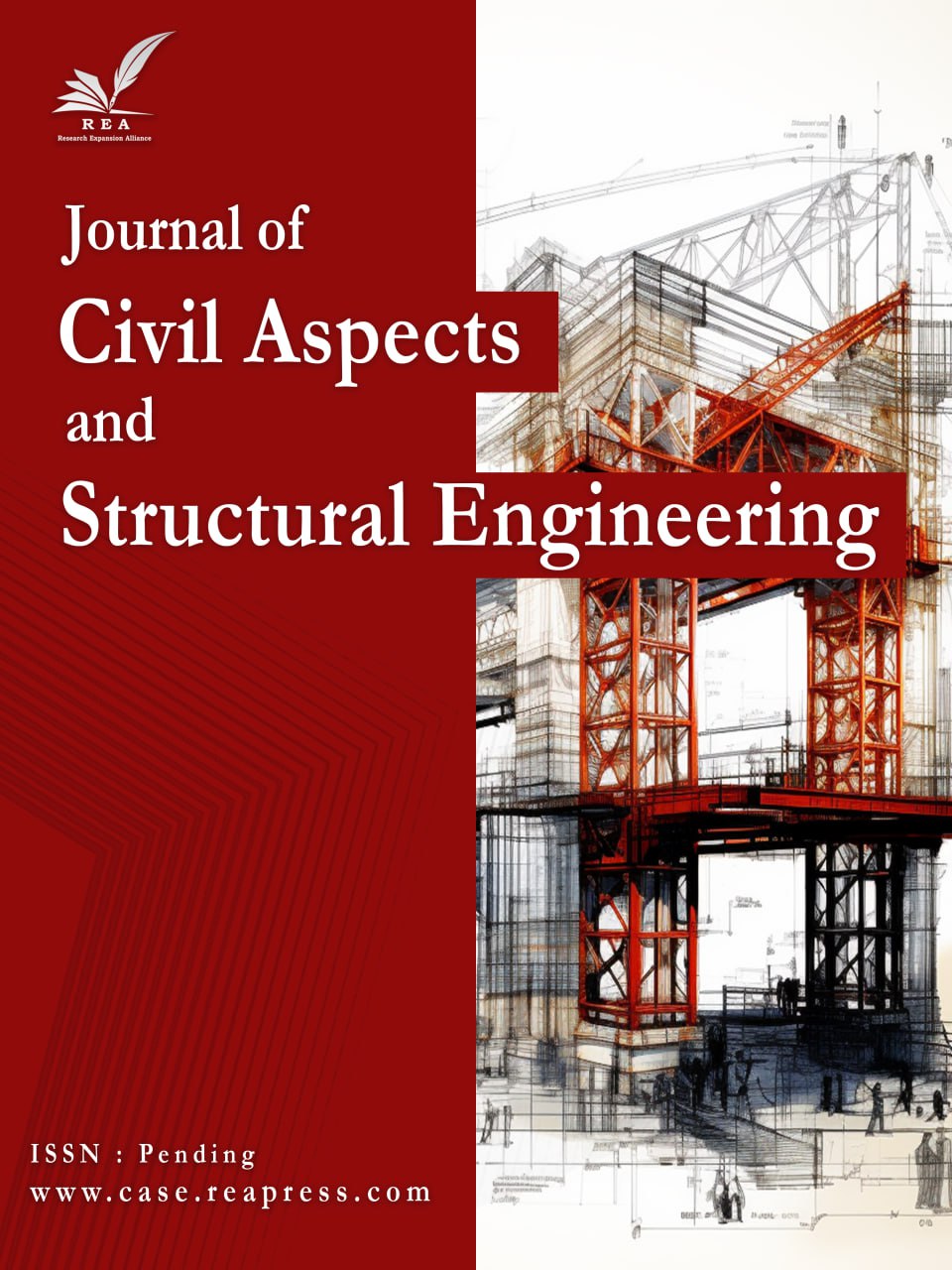Analysis of Safety Risks of Construction Projects Using Multi-Criteria Decision-Making Models (A Case Study of Residential Towers of Armitage, Tehran)
Abstract
The ever-increasing increase in population and urbanization and, as a result, the lack of land has caused many cities in the world to increase in height and create high-rise structures instead of increasing the level. The development and construction plans of civil infrastructure projects, such as the construction of urban tunnels, highways, railways, etc., in addition to the construction projects of residential and construction units, even though they are considered to be one of the most important and job-creating industries of the countries, the advantages and have brought benefits for humans, but due to the complexity and diversity in the construction phase, they are the source of many risks, especially for employees. Therefore, it is very important to pay attention to the issues related to the safety and occupational health of employees in the construction phase. The effects and consequences of not complying with safety issues and the occurrence of accidents will be very costly and sometimes irreparable for the interested groups. This, in turn, is a great limitation for decision makers to optimize energy alternatives independently and discretely, especially in the case of rural communities. In addition, the topographical limitations in the case of renewable energy systems, which are mainly distributed in nature, make energy planning more complicated. In such cases, decision-making analysis plays an important role in designing such a system according to different criteria and goals, even at the exclusive levels of electricity.
Keywords:
Energy systems, Safety management, Risk classificationReferences
- [1] Jafarnia, E., Soltanzadeh, A., & Ghiyasi, S. (2018). A combined health, safety and environment (HSE) risk assessment model based on pmbok project management guide; a case study: development plan of the islamic consultative assembly of Iran. Journal of occupational hygiene engineering, 4(4), 47–58. https://doi.org/10.21859/johe.4.4.47
- [2] Zavadskas, E. K., Turskis, Z., & Tamošaitiene, J. (2010). Risk assessment of construction projects. Journal of civil engineering and management, 16(1), 33–46. https://doi.org/10.3846/jcem.2010.03
- [3] Yousefi, V., Yakhchali, S. H., Khanzadi, M., Mehrabanfar, E., & Šaparauskas, J. (2016). Proposing a neural network model to predict time and cost claims in construction projects. Journal of civil engineering and management, 22(7), 967–978. https://doi.org/10.3846/13923730.2016.1205510
- [4] Jiang, L., Gu, Z. H., Yan, Z. X., Zhao, X., Xie, Y. Y., Zhang, Z. G., … Chen, S. J. (2015). Exome sequencing identifies somatic mutations of DDX3X in natural killer/T-cell lymphoma. Nature genetics, 47(9), 1061–1066. https://doi.org/10.1038/ng.3358
- [5] Burcar Dunovic, I., Radujkovic, M., & Vukomanovic, M. (2016). Internal and external risk based assesment and evaluation for the large infrastructure projects. Journal of civil engineering and management, 22(5), 673–682. https://doi.org/10.3846/13923730.2015.1128479
- [6] Mehdi Jahangiri, Vahid Gharibi, M. A. N. (2021). Risk management and assessment. Fan avaran. (In Persian). https://b2n.ir/f78018
- [7] Guimarães, A. C. F., & Lapa, C. M. F. (2004). Fuzzy FMEA applied to PWR chemical and volume control system. Progress in nuclear energy, 44(3), 191–213. https://doi.org/10.1016/S0149-1970(04)90010-8
- [8] Shirazeh Arghami. Mostafa Poya. (2008). Safety principles in industry and services. (In Persian). https://b2n.ir/b16776
- [9] Hamid, A. R. A., Majid, M. Z. A., & Singh, B. (2008). An overview of construction accidents in Malaysia. Issues in construction industry, 110–123. https://b2n.ir/g38788
- [10] Shin, D. W., Shin, Y., & Kim, G. H. (2016). Comparison of risk assessment for a nuclear power plant construction project based on analytic hierarchy process and fuzzy analytic hierarchy process. Journal of building construction and planning research, 04(03), 157–171. https://doi.org/10.4236/jbcpr.2016.43010
- [11] Sun, D., Xu, F., & He, H. (2012). Safety risk analysis for gas pipeline construction. In ICPTT 2012: better pipeline infrastructure for a better life (pp. 1258–1263). https://B2n.ir/r72949
- [12] Ravanshadnia, M., Rajaie, H., & Abbasian, H. R. (2010). Hybrid fuzzy MADM project-selection model for diversified construction companies. Canadian journal of civil engineering, 37(8), 1082–1093. https://doi.org/10.1139/L10-048
- [13] Chang, K. H., Cheng, C. H., & Chang, Y. C. (2010). Reprioritization of failures in a silane supply system using an intuitionistic fuzzy set ranking technique. Soft computing, 14(3), 285–298. https://doi.org/10.1007/s00500-009-0403-7
- [14] Browner, R. (2021). Safety and health for engineers. Fan avaran. (In Persian). https://b2n.ir/s68515
- [15] Abootorabi, S. M., Mehrno, H., & Omidvari, M. (2014). Proposing a model for safety risk assessment in the construction industry using gray multi-criterion decision-making. J-health-saf-work, 4(3), 67-74. (In Persian). http://jhsw.tums.ac.ir/article-1-5180-en.html
- [16] Serpella, A. F., Ferrada, X., Howard, R., & Rubio, L. (2014). Risk management in construction projects: a knowledge-based approach. Procedia - social and behavioral sciences, 119, 653–662. https://doi.org/10.1016/j.sbspro.2014.03.073
- [17] Shin, D. , Shin, Y. and Kim, G. (2016). Comparison of risk assessment for a nuclear power plant construction project based on analytic hierarchy process and fuzzy analytic hierarchy process. Journal of building construction and planning research, 4, 157–171. http://dx.doi.org/10.4236/jbcpr.2016.43010
- [18] Jafarnia, E., Soltanzadeh, A., & Ghiyasi, S. (2018). A combined health, safety and environment (HSE) risk assessment model based on PMBOK project management guide; a case study: development plan of the Islamic consultative assembly of Iran. Umsha-johe, 4(4), 47-58. (In Persian). http://dx.doi.org/10.21859/johe.4.4.47


